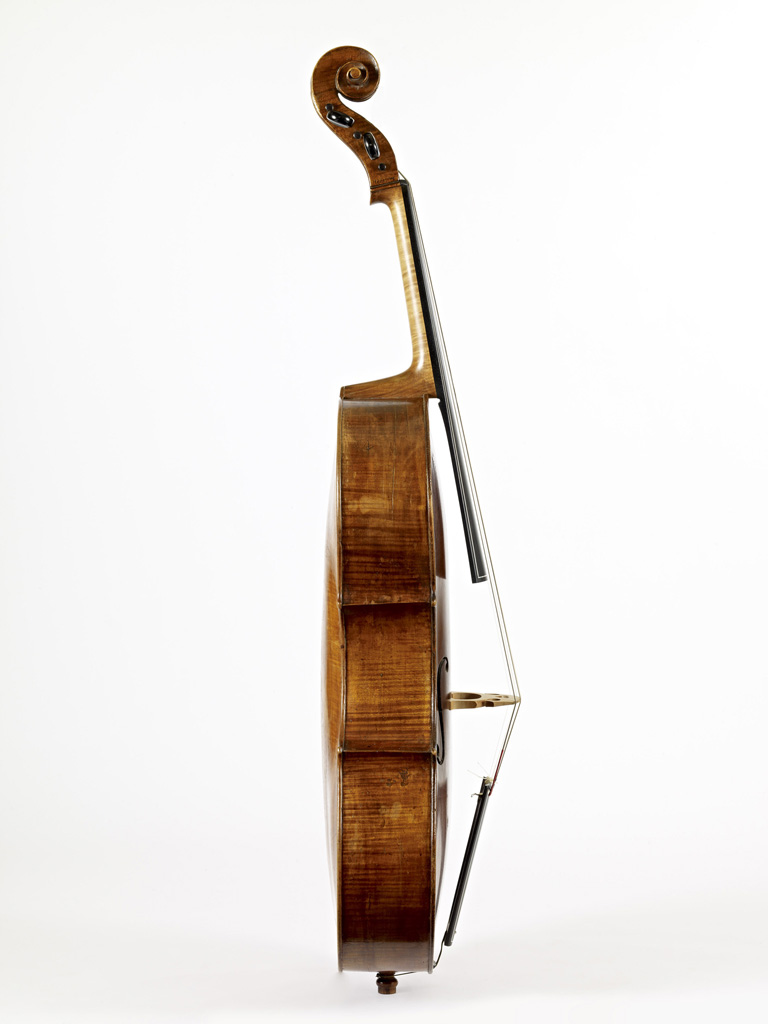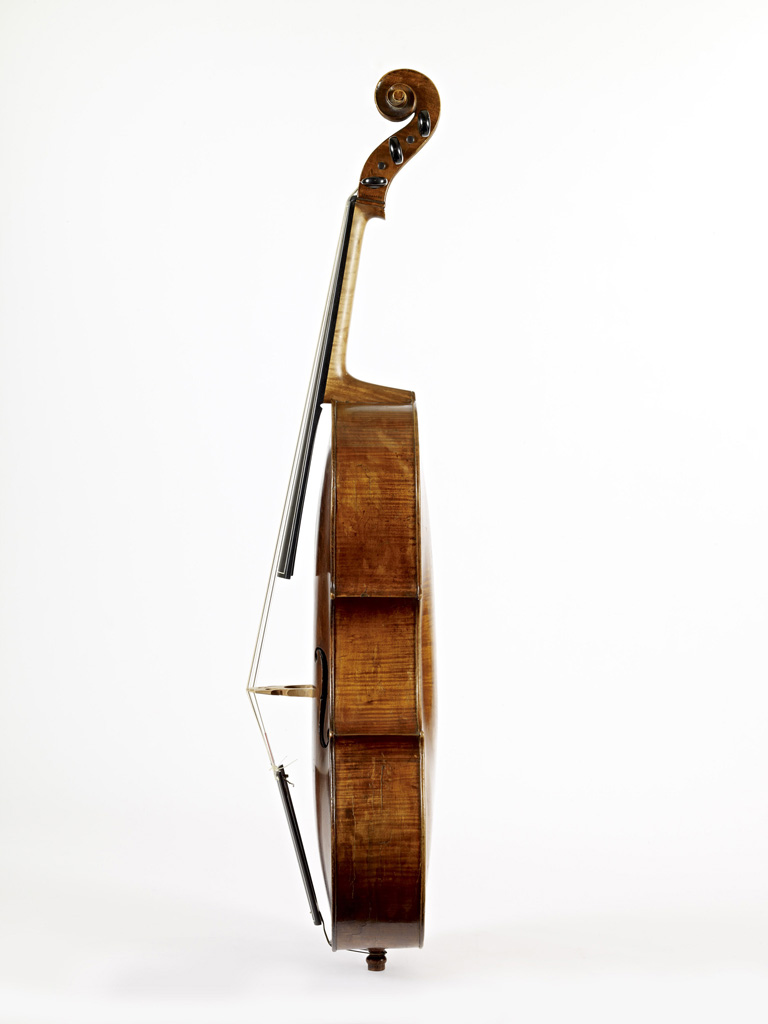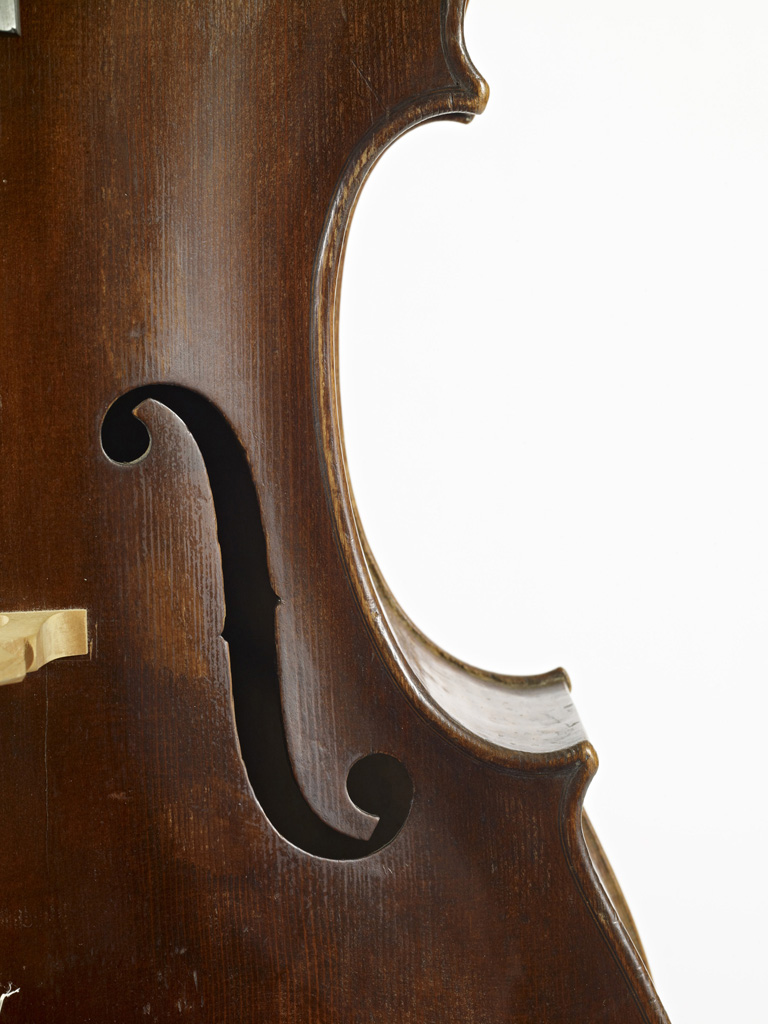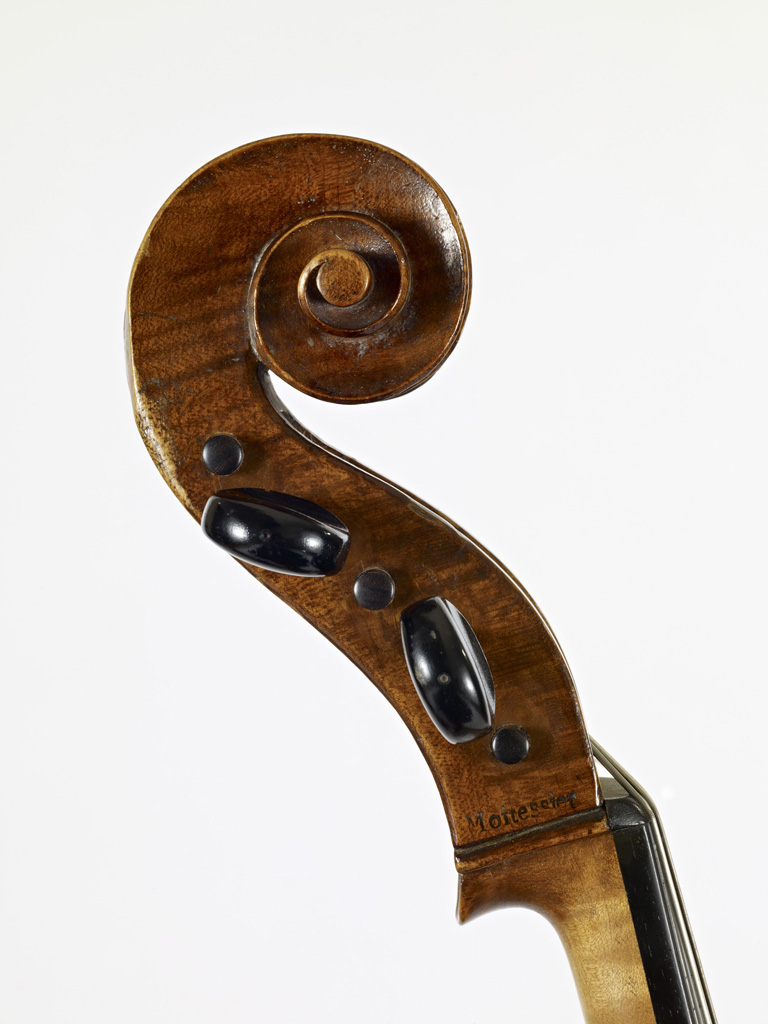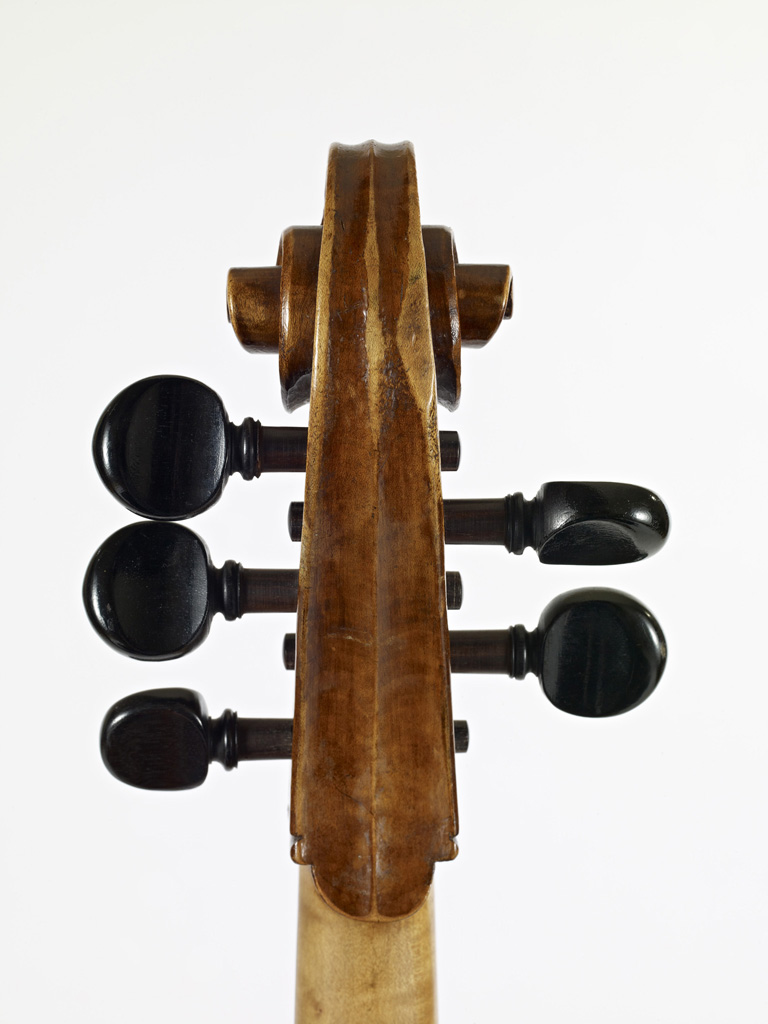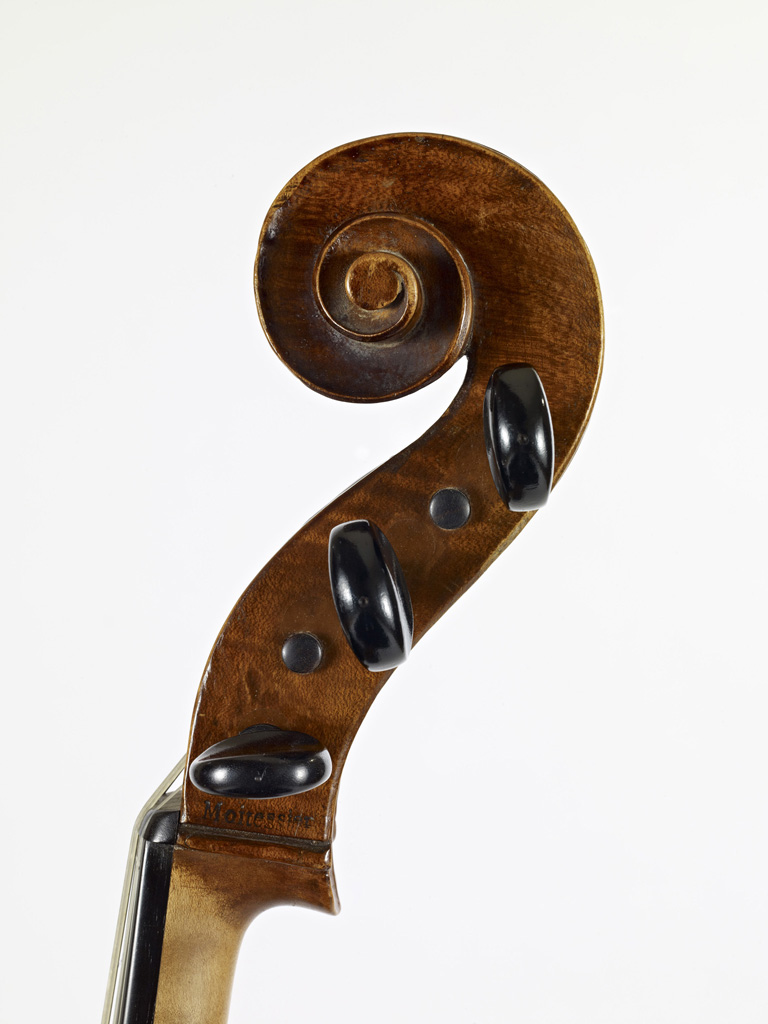The table (possibly a replacement) is of two pieces, with 10 to 8 growth rings per cm. The purfling is very narrow black-white-black.
The back is two pieces of not quite quartered, irregularly flamed maple. The single black-white-black purfling has a wide center strip and does not match that of the table. There are two ebony pins in the bottom block.
The ribs are six pieces of quartered maple with regular medium flame.
The neck, fingerboard, and tailpiece are modern. The modern pegs are ebony, and the extra fifth a mismatch.
The possibly original pegbox and scroll are of regular flamed maple. There is an incised vertical line on each cheek of the pegbox just behind the nut, and along each of these lines is stamped the name Moitessier.
The varnish of the back and ribs is a light golden brown, the scroll a little darker, and the table considerably darker.
Body length 70.9
Body width
upper bout 32.2
center bout 21.4
lower bout 41.0
String length 64.4
Rib height
top block 9.8
upper corners 10.5
lower corners 10.5
bottom block 10.5
There is no label.
Given to us in June 2002 by Hannelore Mueller, Mariastein, Switzerland, from the estate of August Wenzinger, Basel, Switzerland



